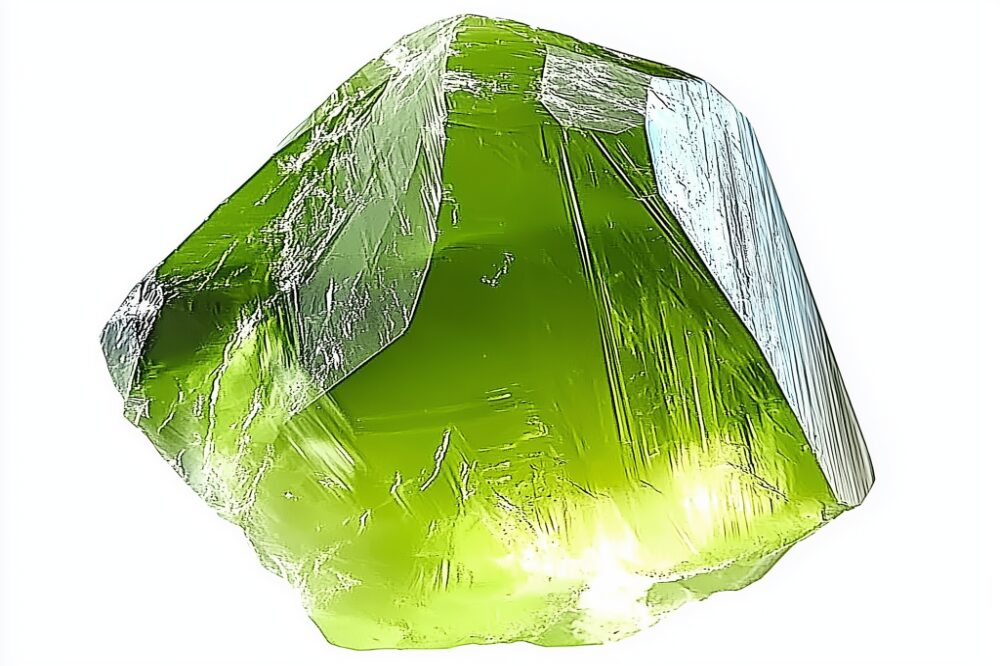Peridot has been found in several areas across North Dakota, hidden among rocks shaped by ancient geological forces. While it may not be as abundant as in some other states, those who search carefully have a chance to uncover this bright green gemstone.
Some of the best places to look are linked to volcanic activity that once shaped the region. Others are connected to natural processes that brought peridot to the surface over time, leaving small deposits waiting to be discovered.
With the right knowledge, finding peridot in North Dakota becomes an exciting challenge. This guide will cover the top locations to search, along with useful tips to help improve your chances of success.
How Peridot Forms Here
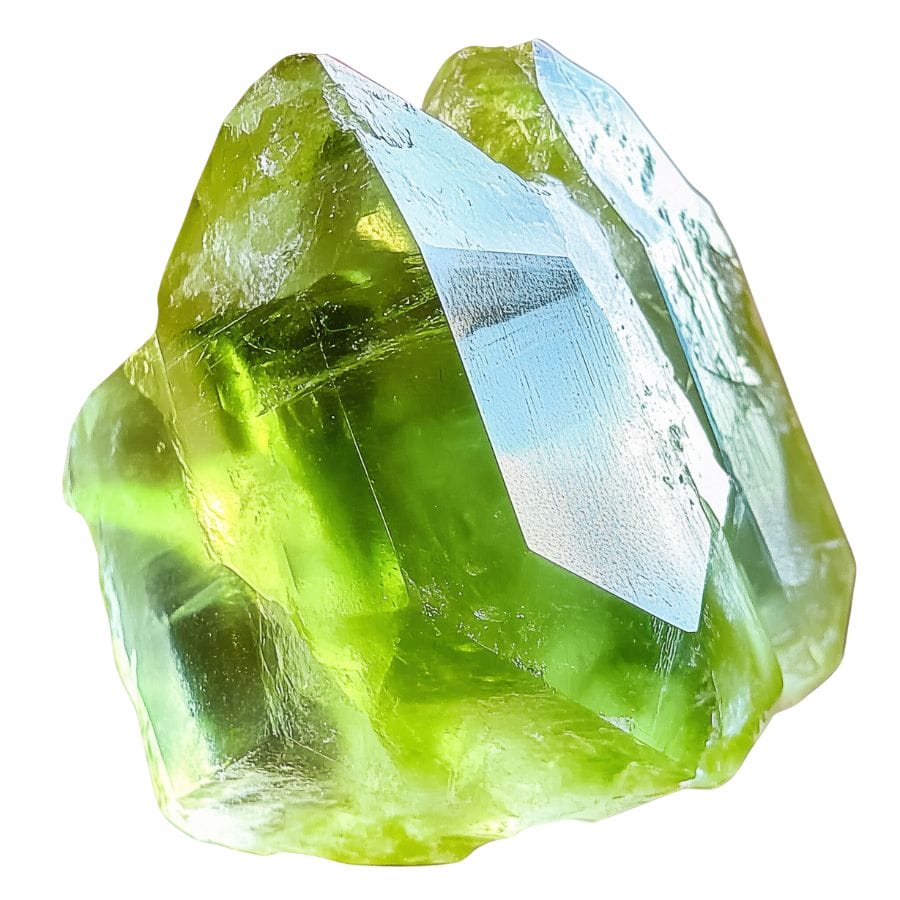
Peridot forms deep within Earth’s mantle, around 20 to 55 miles below the surface, where intense heat and pressure create the perfect conditions. It’s actually made from magma that cools super slowly, letting the crystals grow nice and big.
The main ingredient is olivine, which needs temperatures between 1,000°C to 1,300°C to form properly. When volcanoes erupt, they sometimes bring these green gems up with them in basalt rocks.
What’s really cool is that peridot can also come from meteorites – yep, some of these crystals literally fell from space! The iron and magnesium inside the stone is what gives it that signature olive-green color.
Types of Peridot
Peridot’s value fluctuates based on its origin and quality, with its vivid colors making it a distinctive and sought-after gemstone. Here are the different types of Peridot:
Burmese Peridot

Burmese Peridot shows off a pure, bright green color that looks almost like spring leaves. Most other peridots have brown or yellow mixed in, but Burmese ones usually don’t.
The stone’s special green color comes from the iron inside the crystal. When light hits it, the stone seems to glow from within, creating a beautiful effect that catches everyone’s eye.
These stones often have special markings inside called “lily pads.” These are small, round patterns that look like tiny circles when you look at them with a magnifying glass.
You can often find Burmese Peridot in larger sizes, which makes them great for bigger jewelry pieces. The stones keep their bright color even under different kinds of lighting, so they look good both in sunlight and indoor light.
Pakistani Peridot

Pakistani Peridot is known for its vibrant green hues, which can range from yellow-green to olive green. The stones are usually very clear and shine beautifully when light hits them.
The stone typically has a vitreous luster and can be quite transparent, showcasing its brilliance. High-quality specimens can exhibit exceptional clarity with minimal inclusions, which enhances their appeal in jewelry.
Inside these stones, you might find tiny bubbles of liquid and gas. These create interesting patterns that make each stone has its unique pattern of these markings.
These peridots often come in larger sizes and maintain their bright color even under artificial light. This makes them look just as good in the evening as they do during the day, which is why some people call them “evening emeralds.”
Arizona Peridot
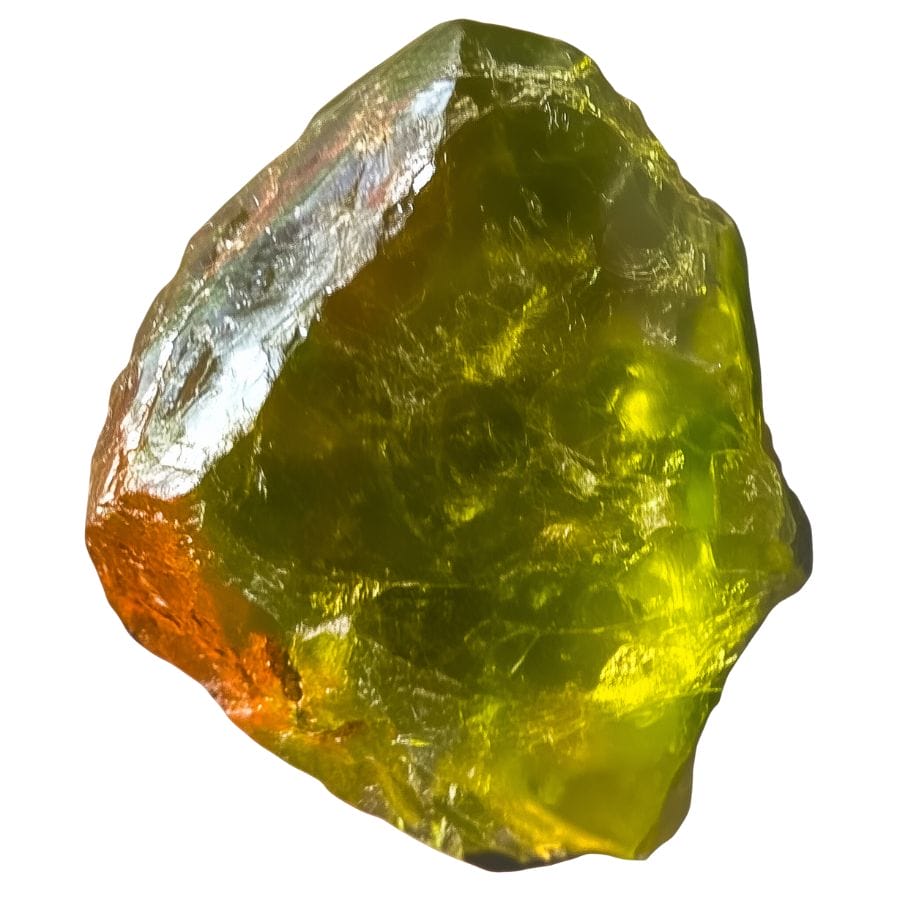
Arizona Peridot shows off a bright, lime-green color that sometimes has olive tones. The stones are usually smaller than other peridots but make up for it with their exceptional brightness and sparkle.
These stones often have a special kind of clarity that makes them appear very clean to the naked eye. When you look at them closely, you might see tiny specks of black minerals inside, which are typical of Arizona stones.
Arizona Peridot is especially famous due to its association with the San Carlos Apache Reservation, which is one of the largest sources of peridot in the world. The region’s peridot is highly valued not only locally but also within the broader gemstone market for its quality and vibrant color.
Changbai Peridot
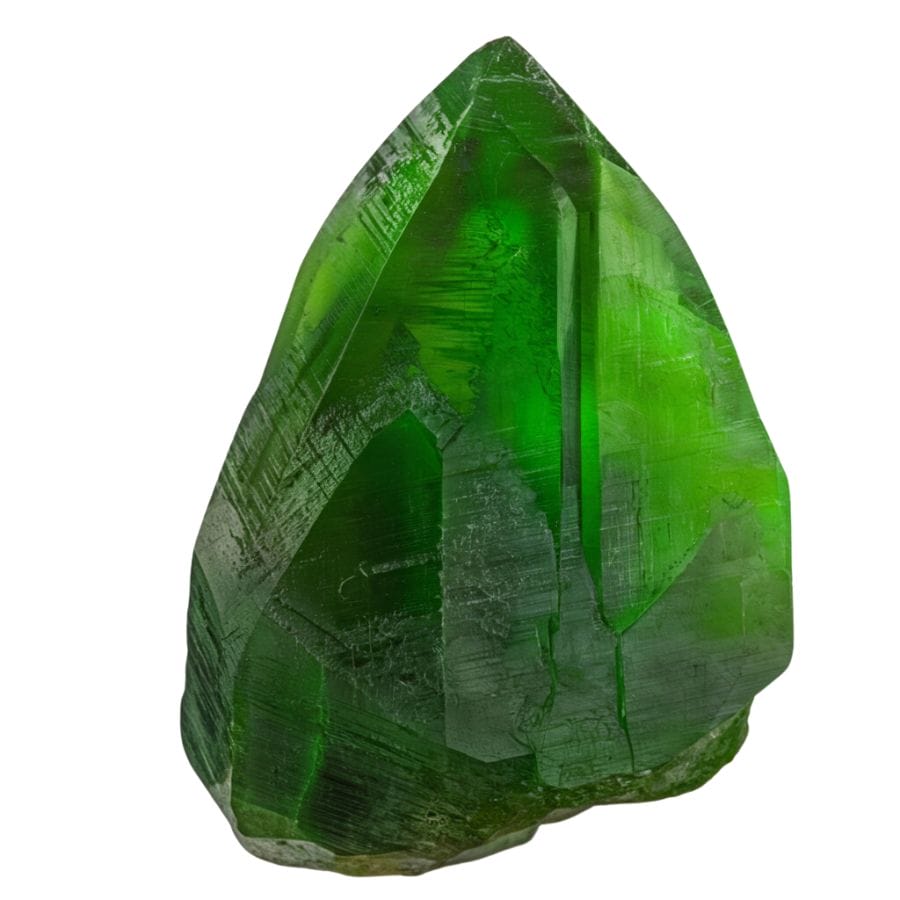
Changbai Peridot displays a deep, rich green color that sets it apart. Their color is more intense than other peridots, showing deep forest green tones.
These stones usually come in medium sizes, around one carat. What makes them special is how clean they look – most have very few internal marks or inclusions. This clarity lets more light pass through, making them especially bright and sparkly.
The color of Changbai Peridot stays consistent throughout the stone. Unlike some other peridots that might show patches of different colors, these maintain their rich green tone evenly. This makes them particularly appealing when set in jewelry.
Their superior clarity and rich color have made them increasingly popular since 2005. Even though they’re newer to the market compared to other peridots, they’ve quickly gained recognition for their outstanding quality.
Vietnam Peridot
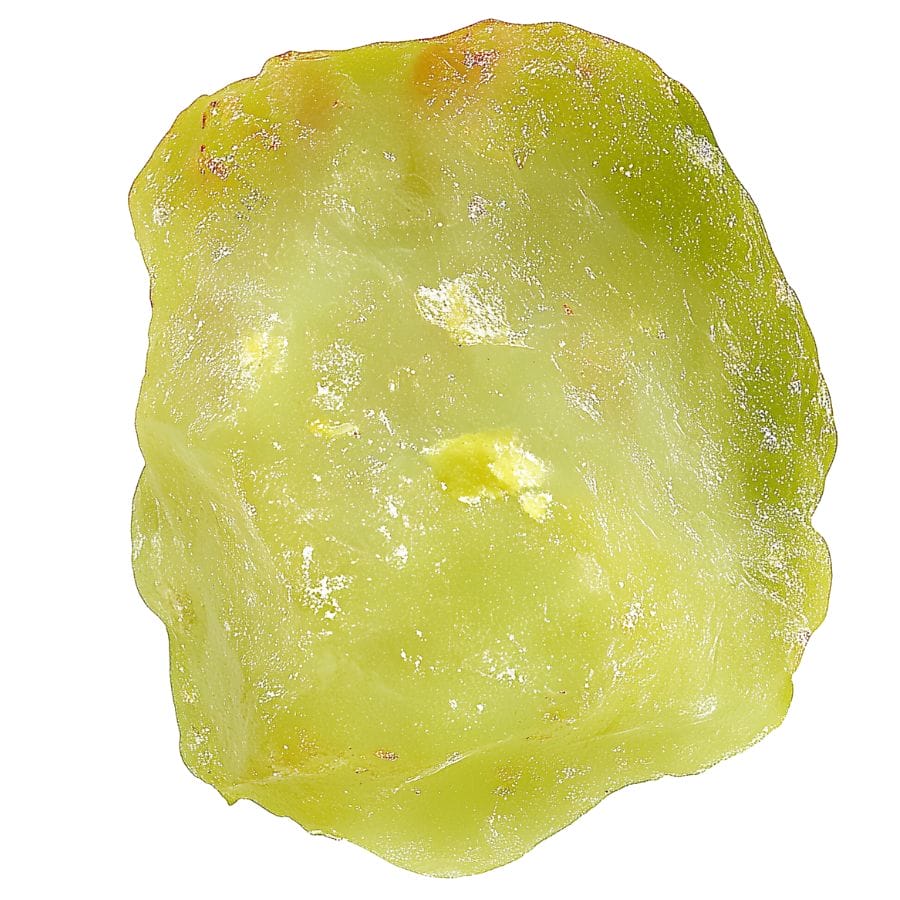
Vietnam Peridot, also known as chrysolite, has a special yellowish-green color that makes it easy to spot. They often come in larger sizes than peridots from other places.
When light passes through these stones, it creates a unique double-image effect. If you look closely at a faceted stone, you might see the edges appear doubled. This effect makes them sparkle in a special way.
Vietnamese peridot is often found in mafic and ultramafic rocks, which are rich in iron and magnesium, leading to the formation of larger and higher-quality stones.
The green color stays even throughout the whole stone. This consistent color is one reason why collectors really like Vietnam Peridot.
Norway Peridot
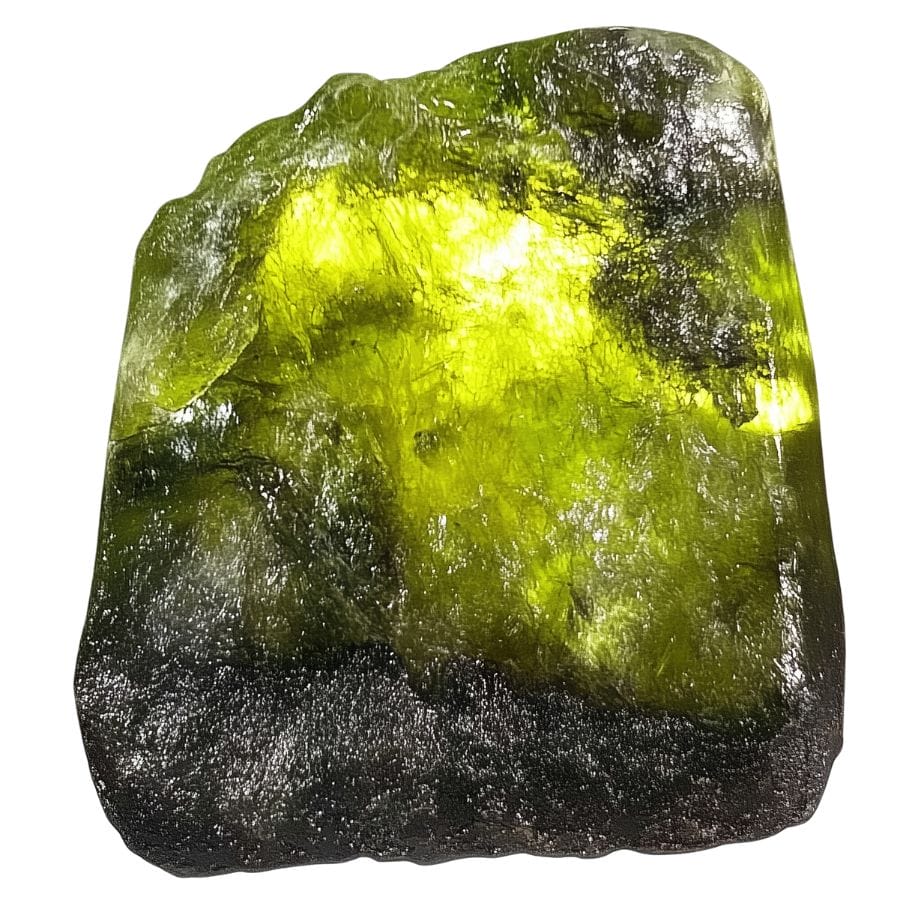
Norway Peridot comes in beautiful olive green shades. The color can range from light yellow-green to deep olive. The amount of iron inside the stone decides how dark or light the green will be.
When light enters these stones, it splits into two beams. This makes the stone look extra sparkly and bright, even when the light isn’t very strong. You can see this special effect best in well-cut stones.
Norway Peridot is part of a long tradition of peridot use in jewelry and artifacts, including significant pieces like those found in the Shrine of the Three Kings in Cologne Cathedral, which were initially thought to be emeralds but were later identified as large peridots.
Pallasite Peridot
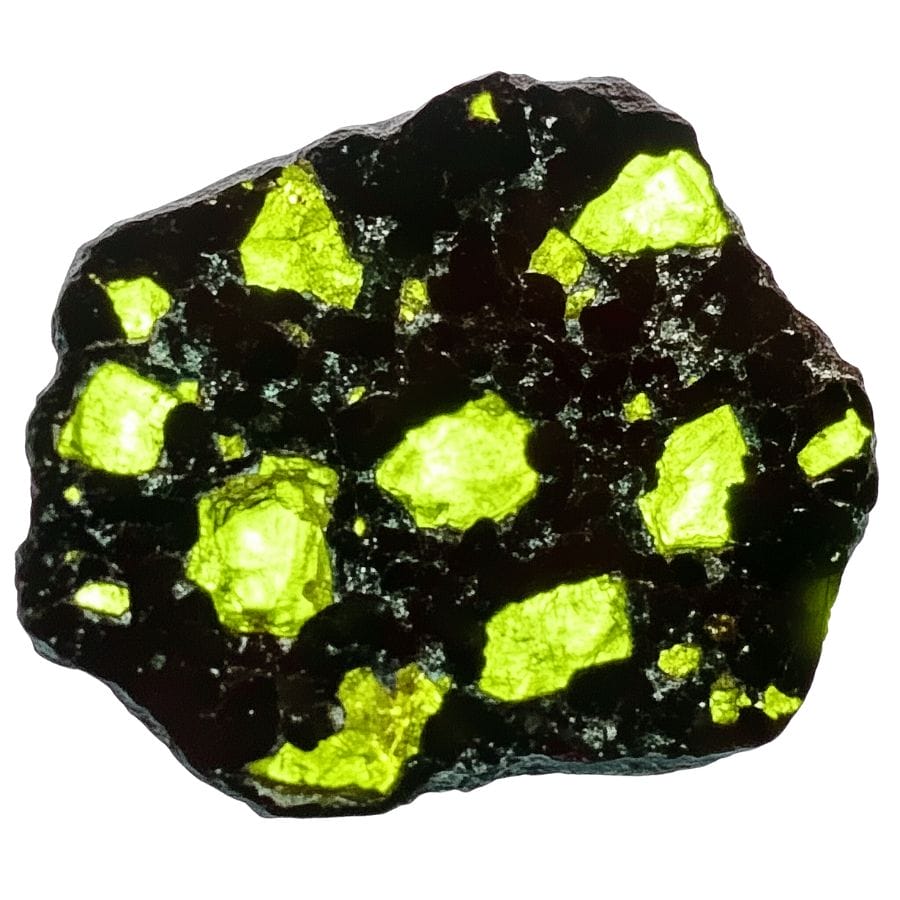
Pallasite Peridot comes from space! These green crystals are found inside meteorites, mixed with metal from space. The green crystals stand out beautifully against the silvery-gray metal background.
These stones form a natural pattern in the meteorite. The mix of bright green crystals and shiny metal creates a beautiful design that looks like stained glass when light shines through it.
Scientists find these stones especially interesting because they tell us about how planets form. The mix of metal and crystal shows us what the inside of planets might look like.
These stones are pretty rare since they only come from meteorites. Collectors really like them because each piece tells a story about space and has its own unique pattern of green crystals.
Antarctica Peridot
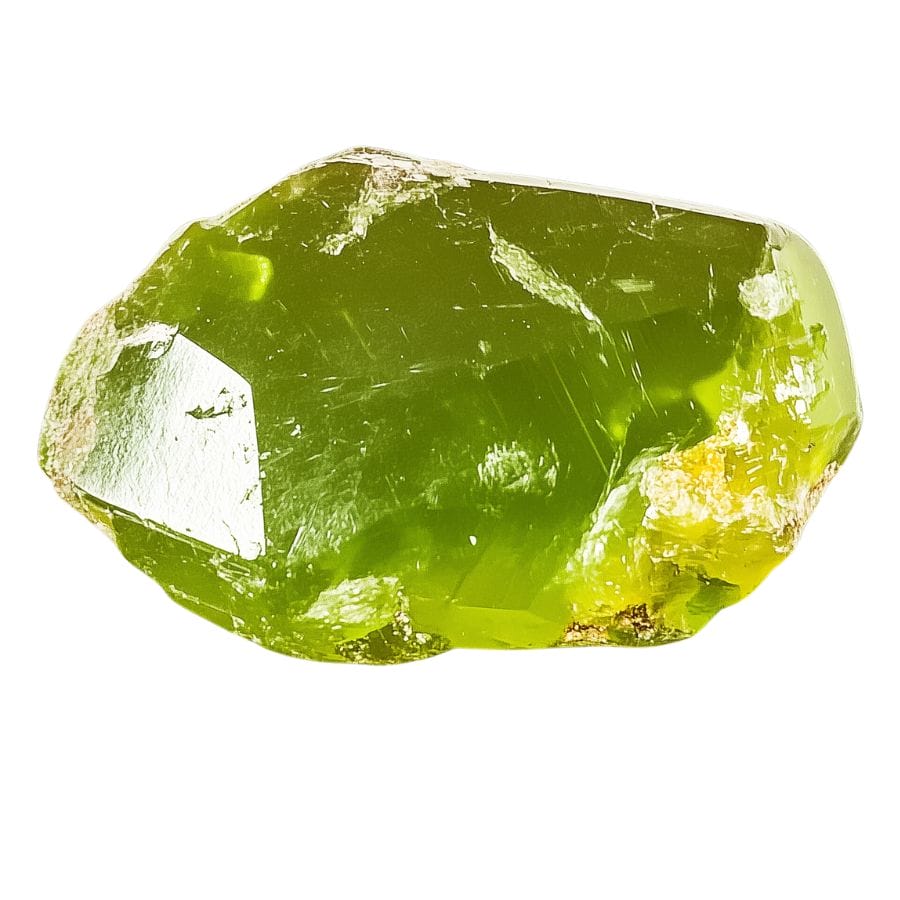
Antarctica Peridot usually comes in smaller sizes, but each stone packs a lot of sparkle. They show a pure green color that can look slightly yellowish or olive in different lights.
These stones formed under extreme cold conditions, which affects how they look. They tend to be very clear with few internal markings. Most pieces are under two carats in size.
The extreme conditions where these stones formed make them special. They had to survive intense pressure and cold temperatures to reach the surface.
These stones are among the rarest peridots because they’re so hard to find. Their small size actually helps them sparkle more intensely than larger stones.
Hawaii Peridot

Hawaii Peridot has a rich olive-green color. Inside many stones, you can find special bubble-shaped marks called “lily pads.” These marks look like tiny round discs frozen in the stone.
One cool thing about these stones is that some of them contain tiny bits of gas trapped inside from when they formed. Scientists can study these bubbles to learn about conditions deep in the Earth.
In Hawaiian culture, peridot is associated with Pele, the goddess of fire and volcanoes, which adds to its allure among collectors interested in cultural artifacts.
New Mexico Peridot
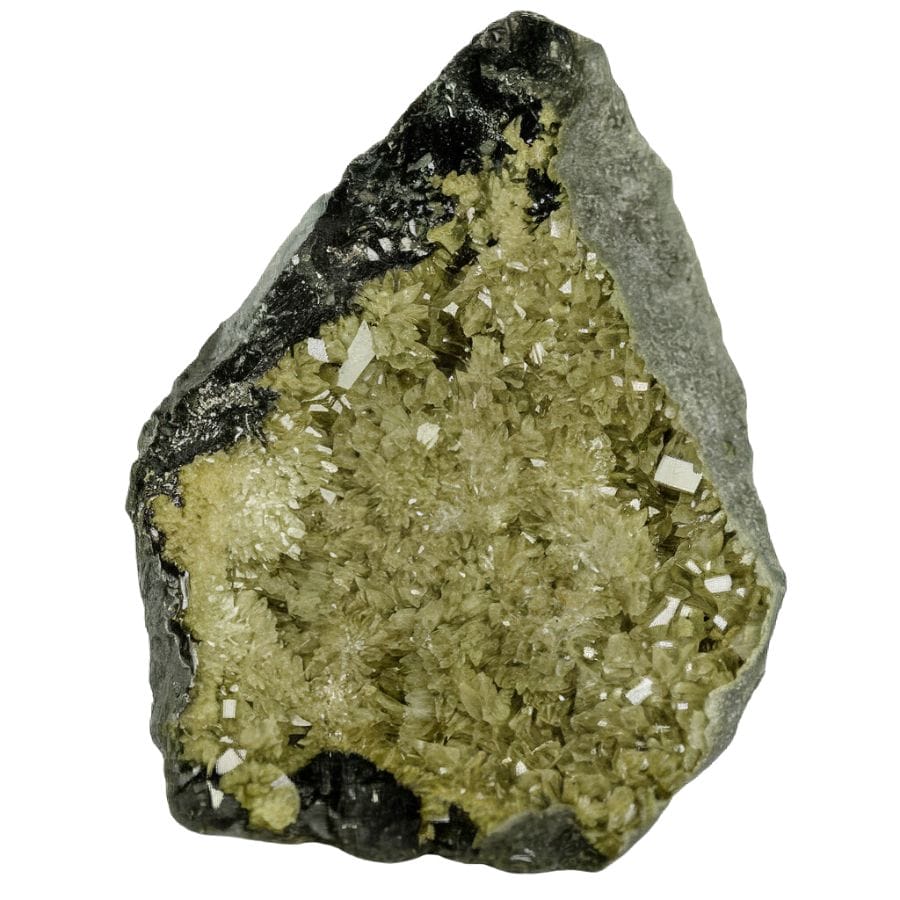
New Mexico peridot typically ranges in color from brown and greenish-brown to yellowish-green and the more desirable green hue. This variety stands out due to its potential for a wider color range compared to peridot from other regions.
One notable aspect of New Mexico peridot is its occurrence in volcanic debris from ancient eruptions, specifically from a 180,000-year-old volcano. This geological background contributes to the unique properties of the stones found there.
The Kilbourne Hole area is particularly noted for producing high-quality peridot that is sometimes considered superior to that from Arizona.
What Rough Peridot Looks Like
Peridot has several distinctive characteristics that can help you identify it in its natural form. These are the key features to look for.
You also want to make sure you know what else you’re looking at. Many rockhounds don’t really know what they’re finding and tossing away.
DON'T MISS OUT ON ANY GREAT FINDS!
While you're out searching for Peridot you're going to find A LOT of other interesting rocks and minerals along the way. The last thing you want to do is toss out something really interesting or valuable. It can be easy to misidentify things without a little guidance.
You absolutely need a good reference guide in order to understand what you're looking at!
We've put together a fantastic field guide that makes identifying 140 of the most interesting and valuable rocks and minerals you will find REALLY EASY. It's simple to use, really durable, and will allow you to identify just about any rock and mineral you come across. Make sure you bring it along on your hunt!

Now, back to the identification specifics:
Check for a glassy or waxy luster
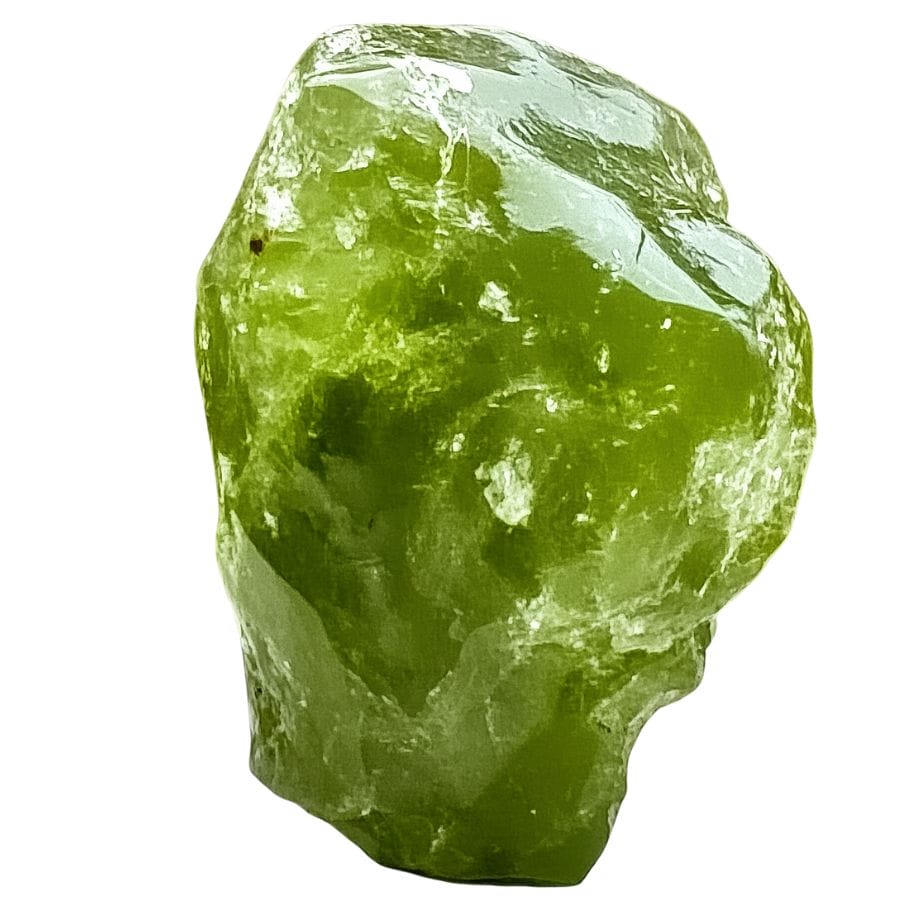
Raw peridot typically shows a distinct glassy to waxy shine, even in its unpolished state. When you shine a light on it, you’ll notice it’s not quite as sparkly as quartz but definitely shinier than most common rocks.
Pro tip: if it looks kind of like olive oil frozen in stone form, you might be onto something!
Look for that signature olive-green color
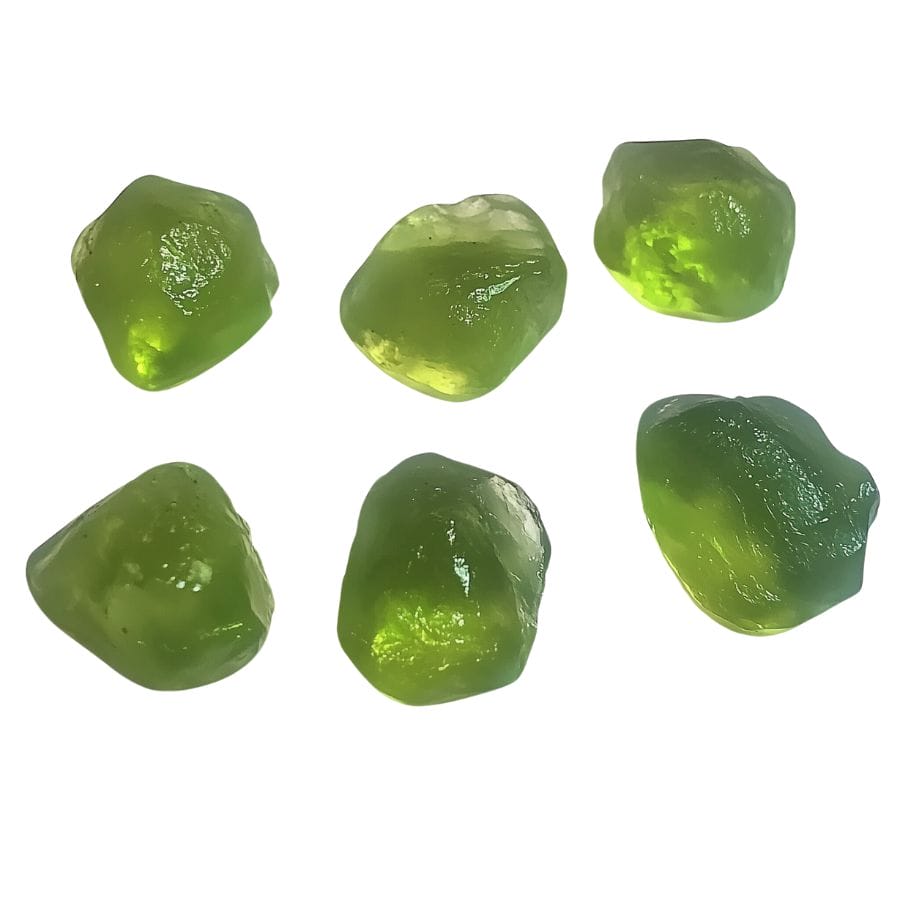
Unlike other green stones, peridot has this unique yellowish-green to olive-green color that’s pretty consistent throughout the stone.
Here’s the thing – even when rough, it shouldn’t have dark spots or zones. If you spot patches of brown or black, you’re probably looking at something else.
Hold it up to natural light – a genuine peridot will show that characteristic color even in its rough form.
Examine the crystal structure
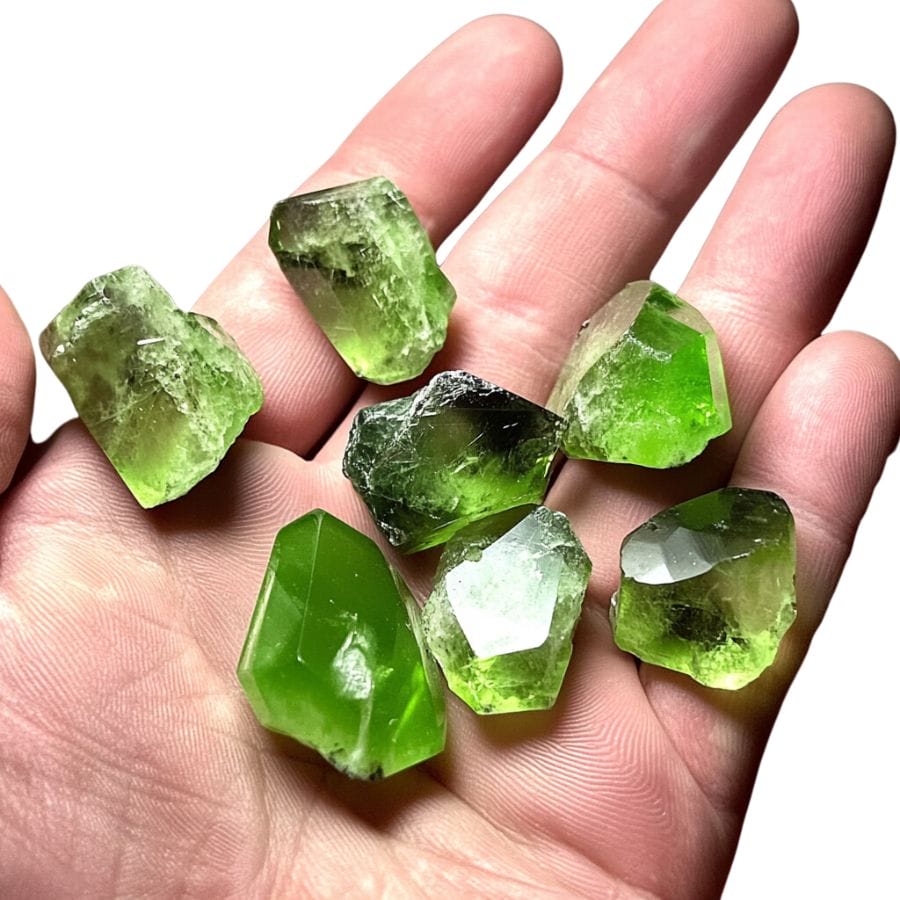
In its natural state, peridot forms stubby, prismatic crystals. Look for somewhat rectangular or barrel-shaped formations – they might be rough, but you should see hints of this shape.
Sometimes you’ll spot these crystals embedded in darker volcanic rock (that’s basalt, by the way). The surfaces might look a bit pitted or weathered, but they shouldn’t be perfectly smooth.
A Quick Request About Collecting
Always Confirm Access and Collection Rules!
Before heading out to any of the locations on our list you need to confirm access requirements and collection rules for both public and private locations directly with the location. We haven’t personally verified every location and the access requirements and collection rules often change without notice.
Many of the locations we mention will not allow collecting but are still great places for those who love to find beautiful rocks and minerals in the wild without keeping them. We also can’t guarantee you will find anything in these locations since they are constantly changing.
Always get updated information directly from the source ahead of time to ensure responsible rockhounding. If you want even more current options it’s always a good idea to contact local rock and mineral clubs and groups
Tips on Where to Look
Peridot typically forms in volcanic areas and can be found in several accessible locations. Here’s where you should start looking:
Volcanic Rock Formations
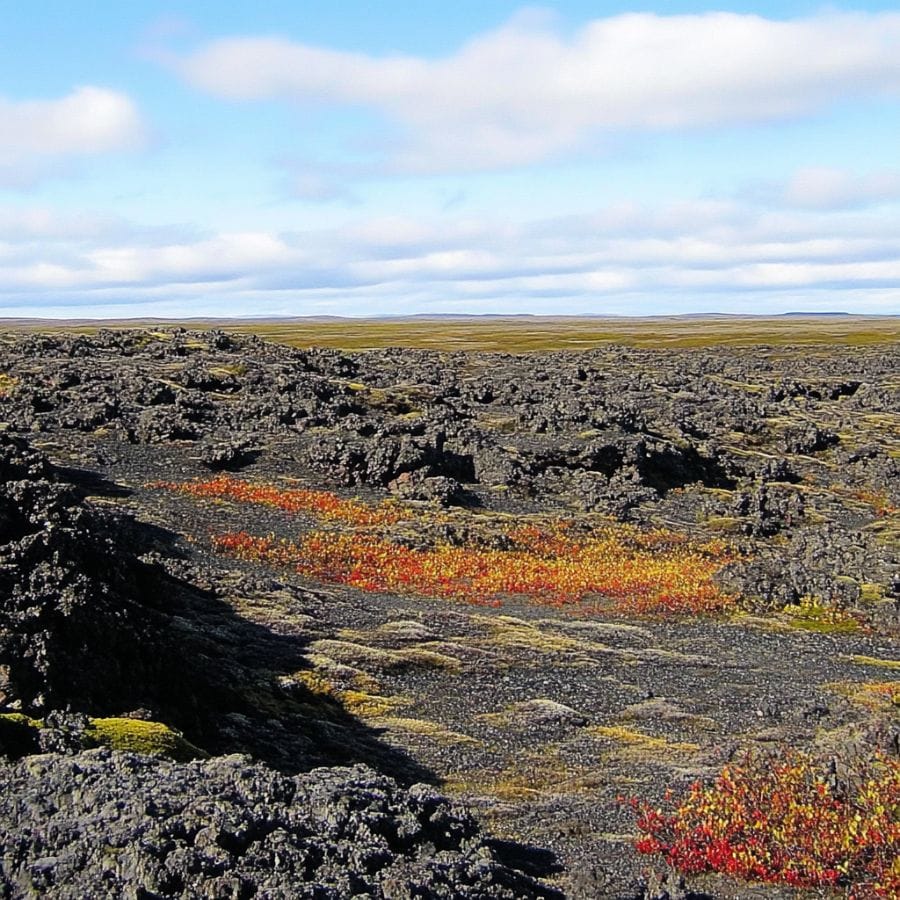
Look for dark-colored basalt rocks and olivine-rich formations. Check areas where ancient lava flows have created large rock deposits, especially those with visible green crystals embedded in the rock. These rocks often weather over time, exposing the peridot crystals.
Stream Beds and Gravel Banks
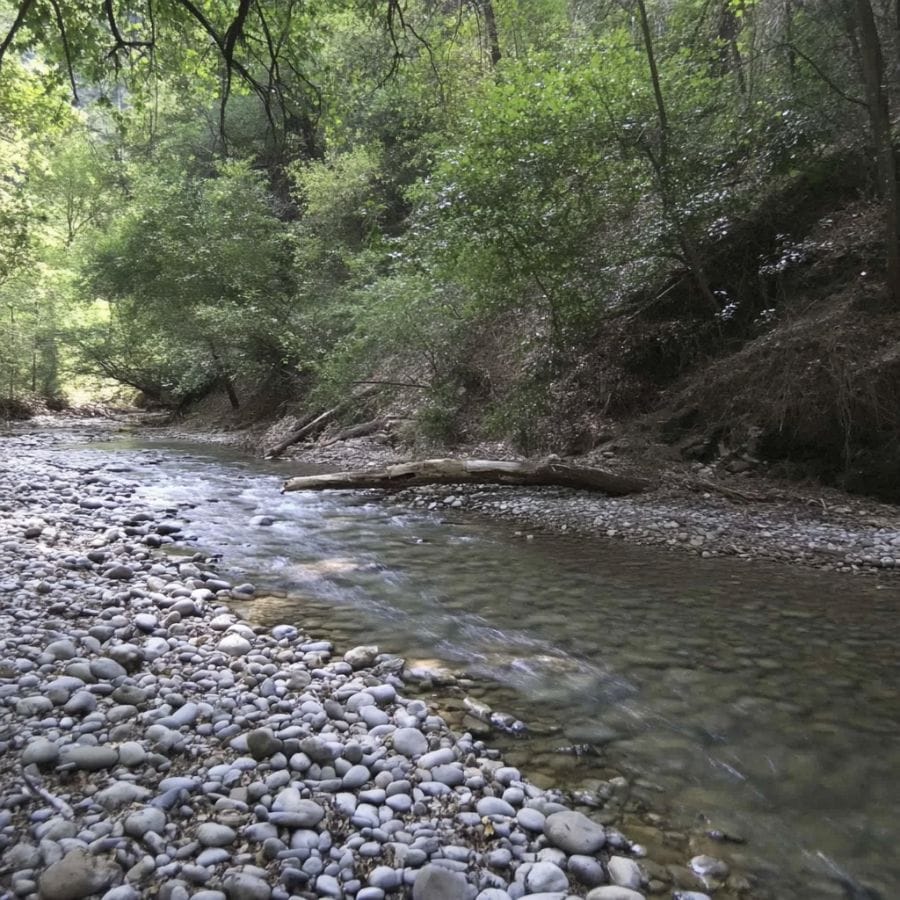
Search in stream beds where water has naturally broken down volcanic rocks. Peridot is usually more concentrated in these areas because water carries away lighter materials while leaving behind heavier minerals.
This makes it easier to spot the olive-green crystals among the gravels and sands that have accumulated over time.
Old Mining Areas
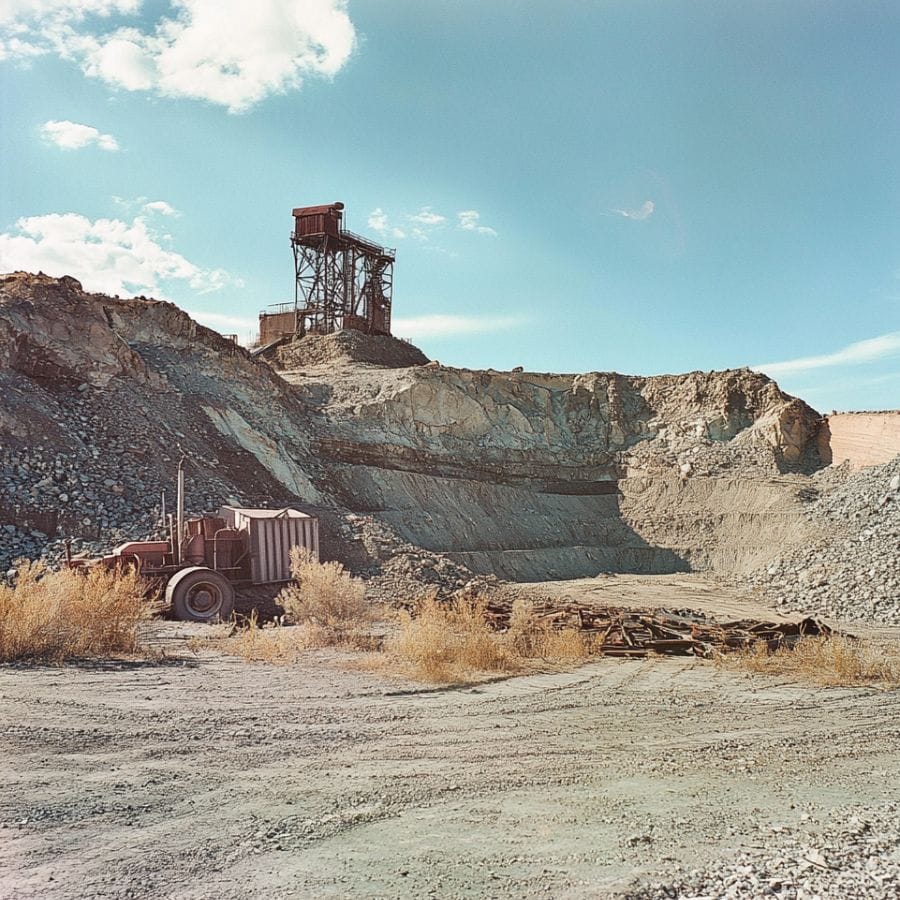
Visit abandoned mine dumps and tailings, particularly those known for copper or nickel mining operations that were active in volcanic regions.
These areas often contain peridot as a secondary mineral, and since the rock has already been broken down during previous mining operations, the gems are easier to spot.
The types of Peridot you can find around the state

In North Dakota, the most common type of peridot found is a vibrant green variety, often with a yellowish tint. These stones are typically smaller but still shine brightly when exposed to light, making them a beautiful find for rockhounds.
The peridot in North Dakota tends to have a clean appearance, with minimal internal marks or inclusions. This clarity adds to their appeal, and when discovered in volcanic debris or rocky areas, they offer an exciting treasure for gem enthusiasts.
Some Great Places To Start
Here are some of the better places in the state to start looking for peridot:
Always Confirm Access and Collection Rules!
Before heading out to any of the locations on our list you need to confirm access requirements and collection rules for both public and private locations directly with the location. We haven’t personally verified every location and the access requirements and collection rules often change without notice.
Many of the locations we mention will not allow collecting but are still great places for those who love to find beautiful rocks and minerals in the wild without keeping them. We also can’t guarantee you will find anything in these locations since they are constantly changing.
Always get updated information directly from the source ahead of time to ensure responsible rockhounding. If you want even more current options it’s always a good idea to contact local rock and mineral clubs and groups
Hettinger
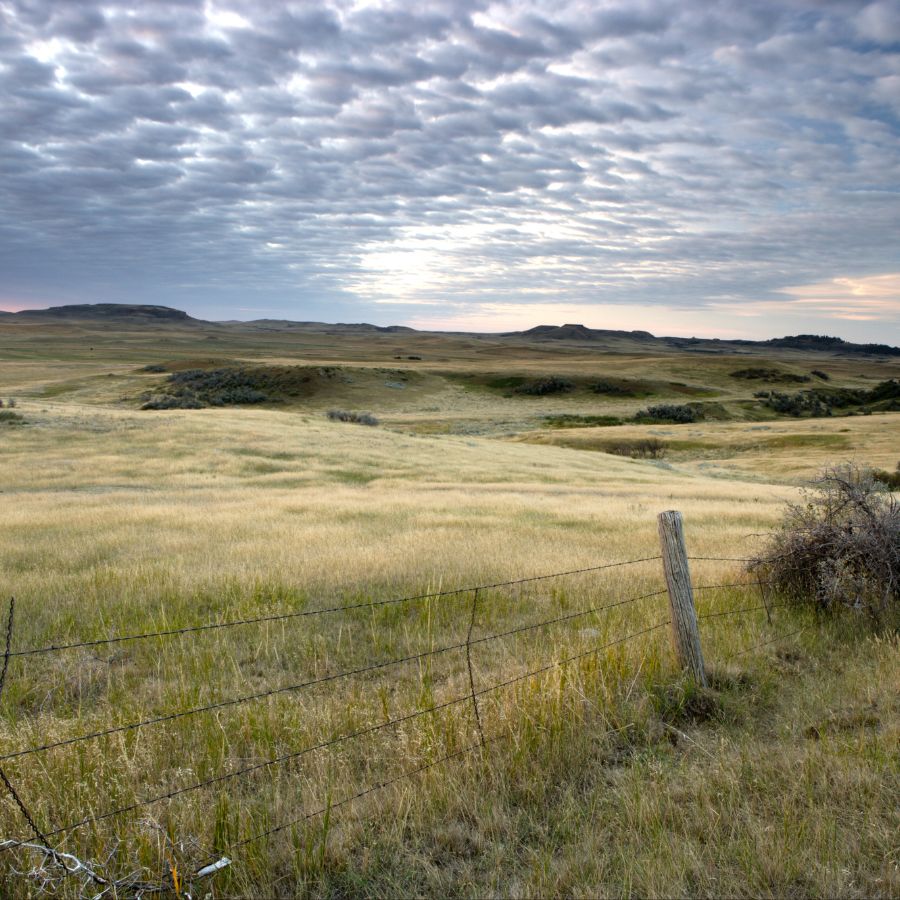
The landscape around Hettinger holds traces of past volcanic activity that contributed to the area’s mineral deposits. Certain rock formations in this region contain materials that suggest peridot could be present.
Loose gravel beds and weathered outcrops are good places to check for small green crystals. Erosion may have uncovered pieces mixed in with other minerals.
Exploring dry washes and areas where rocks have been naturally broken down could increase the chances of finding something interesting. Paying close attention to changes in color and texture in the soil might help in spotting potential finds.
Regent
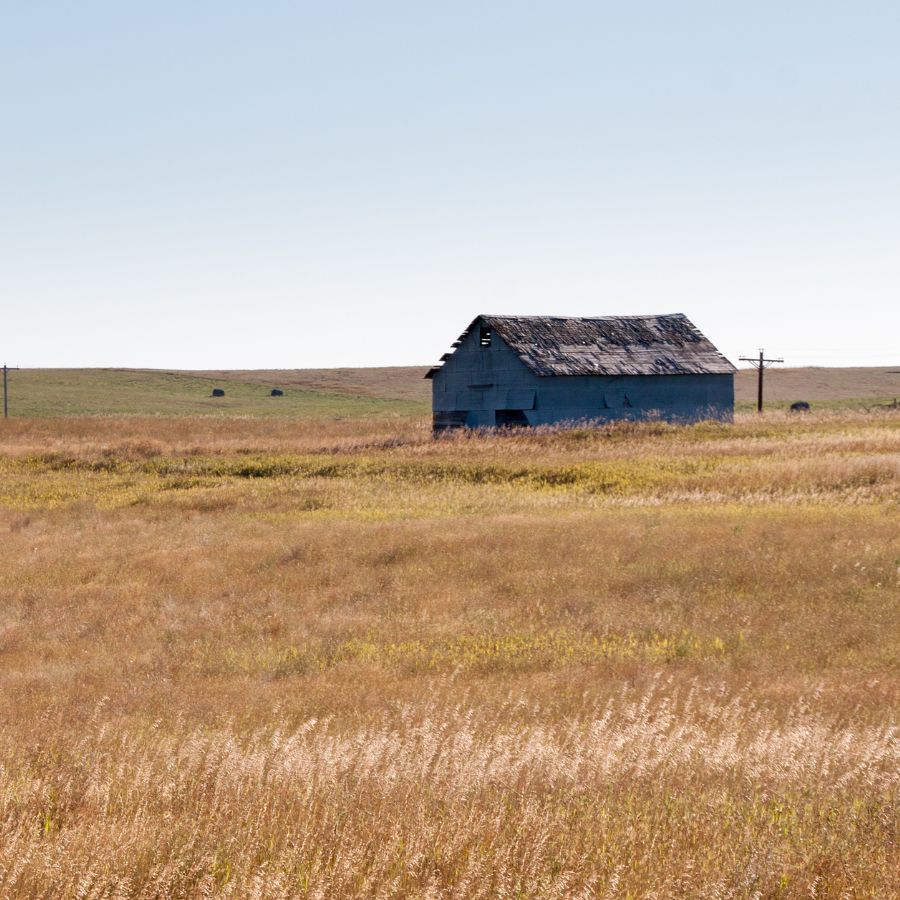
Regent is surrounded by rolling hills and rocky patches that have been shaped by time and natural forces. Some of these areas contain the right conditions for peridot to exist.
Checking loose sediments in creek beds and eroded slopes may lead to surprising discoveries. Minerals tend to collect in these spots after being washed down from higher ground.
Examining gravel piles and rocky hillsides might also be useful for those searching carefully. Small green crystals could be mixed in with other stones waiting to be found.
Bowman Area
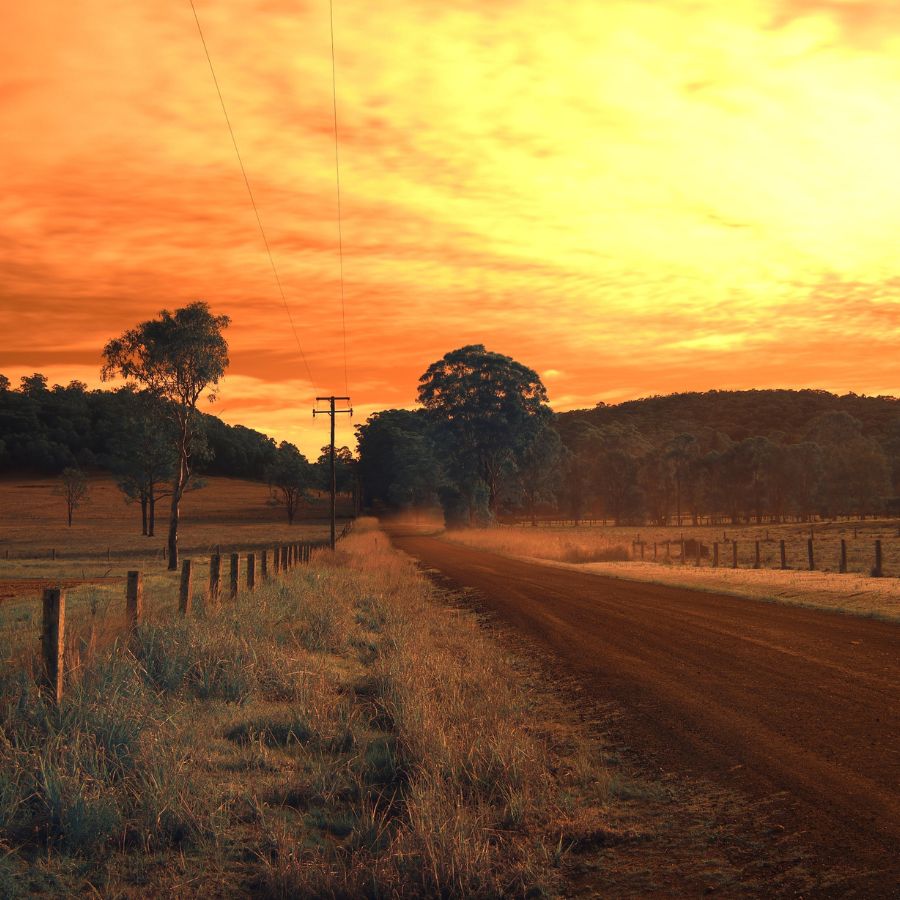
Bowman’s terrain includes rugged hills and rock formations that hint at the area’s volcanic past. Some of these formations contain minerals linked to peridot, making them worth exploring.
Natural forces have broken down older rocks, exposing materials that might hold something valuable. Dry streambeds and shallow washes could be good places to start.
Stony slopes and areas where minerals have settled over time might also be worth investigating. Careful searching could reveal green crystals hidden among other rocks.
Medora
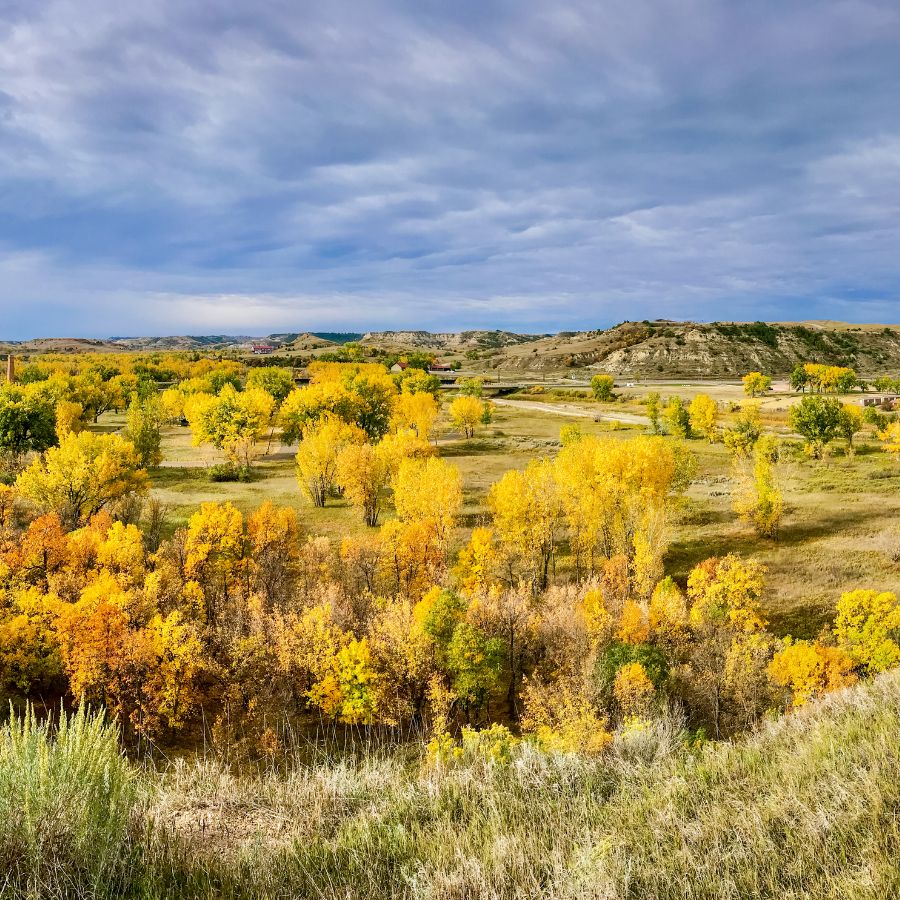
Medora is known for its rocky cliffs and exposed layers of sediment that have been shaped by erosion. Some of these formations contain minerals that point to the possibility of peridot.
Loose rock piles and dry creek beds could be promising locations for searching. Natural shifts in the land have helped bring buried minerals closer to the surface.
Exploring areas where fresh rock has broken away might lead to interesting finds. Paying attention to spots where minerals have gathered could improve the chances of spotting something green.
Rhame
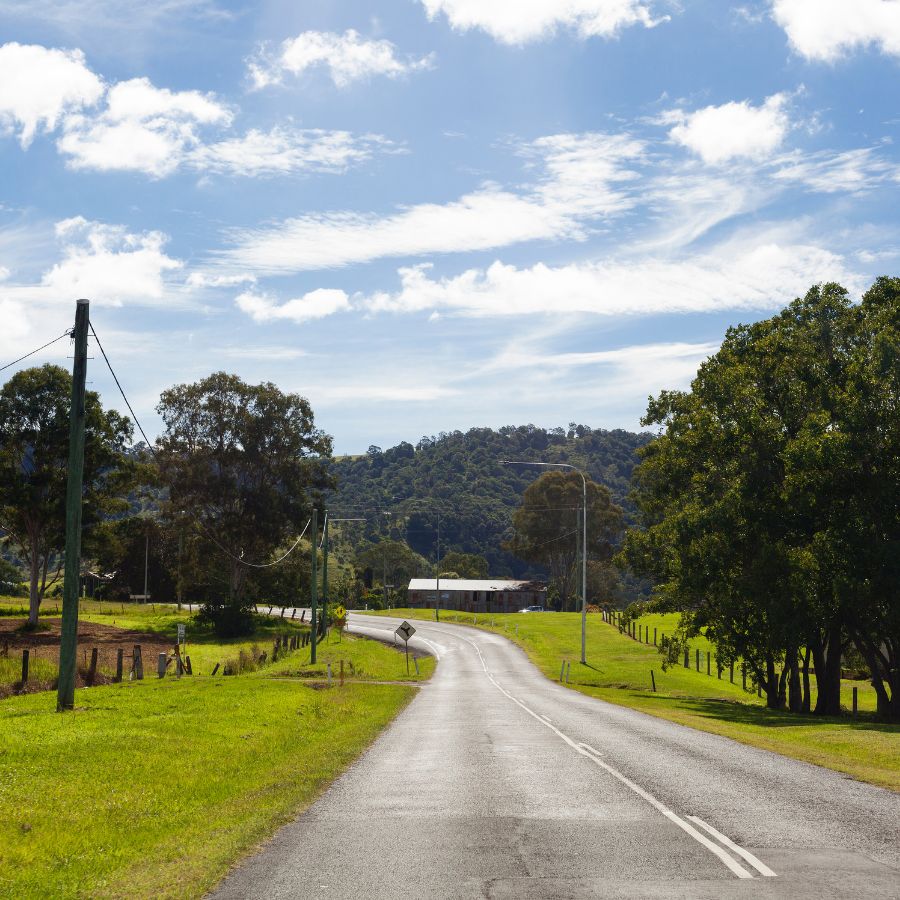
Rhame sits in a region where layers of rock have been pushed up and broken down over time. Some of these layers contain minerals that are associated with peridot.
Checking rocky outcrops and gravel beds might lead to small discoveries. These areas tend to collect loose minerals that have been eroded from deeper rock formations.
Dry washes and weathered slopes could also be good places to search. Looking closely at color variations in the ground might help in spotting small green crystals.
Places Peridot has been found by County
After discussing our top picks, we wanted to discuss the other places on our list. Below is a list of the additional locations where we have succeeded, along with a breakdown of each place by county.
| County | Location |
| Billings | Beach |
| Burleigh | Bismarck |
| Burleigh | Lincoln |
| Burleigh | Baldwin |
| Burleigh | McKenzie |
| Cass | Fargo |
| Cass | West Fargo |
| Cavalier | Walhalla |
| Cavalier | Cavalier |
| Dickey | Oakes |
| Dickey | Ellendale |
| Divide | Crosby |
| Divide | Noonan |
| Dunn | Killdeer |
| Dunn | Halliday |
| Grant | Carson |
| Grant | New Leipzig |
| Grant | Elgin |
| Golden Valley | Sentinel Butte |
| Golden Valley | Fryburg |
| Grand Forks | Grand Forks |
| Grand Forks | East Grand Forks |
| Hettinger | Mott |
| Kidder | Steele |
| LaMoure | LaMoure |
| LaMoure | Nortonville |
| McHenry | Towner |
| McHenry | Velva |
| McIntosh | Lamoure |
| Morton | Mandan |
| Morton | New Salem |
| Morton | St. Anthony |
| Mountrail | Stanley |
| Mountrail | New Town |
| Ransom | Lisbon |
| Ransom | Enderlin |
| Richland | Wahpeton |
| Richland | Lindahl |
| Sargent | Forman |
| Sargent | Gwinner |
| Sheridan | McClusky |
| Stutsman | Jamestown |
| Stutsman | Buchanan |
| Ward | Minot |
| Ward | Burlington |

